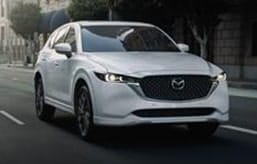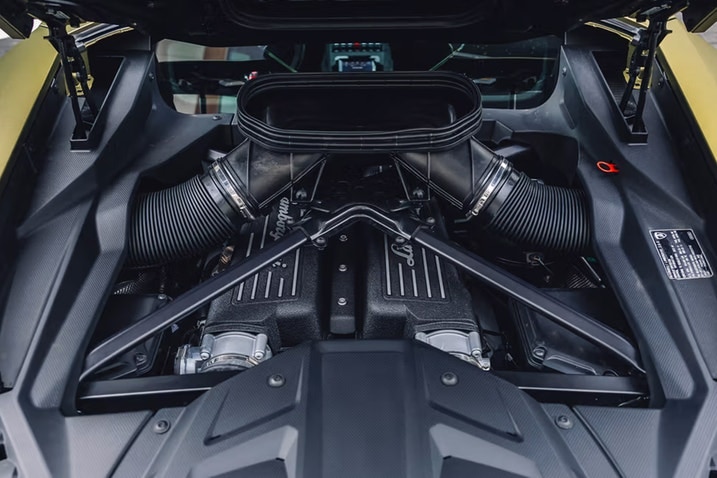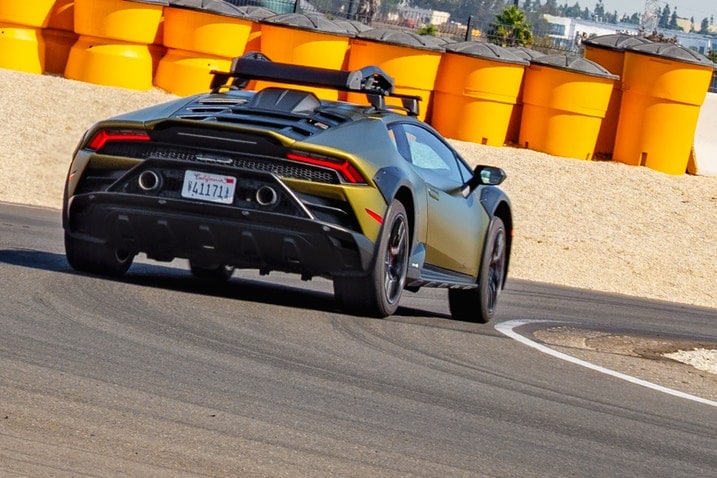- The Sterrato is the final iteration of the legendary Lamborghini Huracán supercar.
- A higher ride height, specially tuned suspension and all-terrain tires give it some off-road capability.
- Its 601-horsepower V10 engine will forever be in our hearts.
2024 Lamborghini Huracán Sterrato Tested: Quicker and More Fun Than a 911 Dakar
This off-road supercar offers a new level of unnecessary fun
When I first heard about the Huracán Sterrato, it was tough to see it as anything more than a one-off and was probably just fodder for an upcoming auto show. But when I drove it for the first time in 2023, I was a rabid believer. I wanted one. Badly. Over desert highways and around a rallycross course, the Sterrato proved to be the real deal; ridiculous, fun and exotic in every sense of the word. So now that I know the Sterrato can handle its business off-road and in a curated environment, it's time to find out how it will do the real world — and, more specifically, at the Edmunds test track.
The numbers
Under the engine cover is the same-ish 5.2-liter V10 engine I've come to love and drool over in other Huracáns. In the Sterrato, the engine makes slightly less power (601 hp vs. 630 hp), but it still races to its rev cut at 8,500 rpm and sounds glorious all the way to its limiter.
At the test track, and with launch control enabled (Lamborghini calls it Thrust mode), the Sterrato wriggled its way to 60 mph in just 3.3 seconds and howled through the quarter mile at 125.7 mph in just 11.1 seconds. The Sterrato's initial struggle with traction is all down to its Bridgestone Dueler all-terrain tires. They're narrower than what other Huracáns wear and their chunky tread blocks trade on-road traction for off-road capability. For comparison, an all-wheel-drive Huracán Evo we tested hit 60 mph in 2.8 seconds and did the quarter mile in 10.8 seconds at 127.6 mph.
The noise of the Huracán Sterrato — or any Huracán for that matter — is always worth a mention. In the era of muffled roar of twin-turbo everything (not that that's not kinda cool on its own), the Lamborghini's naturally aspirated V10 engine is distinctive nearly beyond description. Inside or out, the Huracán sounds properly exotic. It's relatively quiet under 3,500 rpm, but once the exhaust opens up, the noise that comes ripping out of its exhaust pipes is somewhere between a guttural howl and a wail. It's definitely intimidating at first, but after a short time behind the wheel, you become entranced by the sound. Every time a driver made an acceleration run or lapped our handling track, everyone else stopped to listen. It's that good.
During our panic braking test, tires again proved to be the major differentiator between the Sterrato and other Huracáns. Even with its impressive carbon-ceramic brakes, those tires gave the Sterrato a 127-foot stopping distance putting it in the company of midsize SUVs. The aforementioned Huracán Evo stopped in just 103 feet, while other serious performance cars can easily stop in under 100 feet. Pedal feel was still excellent, both on the road and around our test track, but this is a great example of just how much of a difference tires can make to your car's performance.
While the Sterrato might be more of a good time in the dirt than on the road, that doesn't mean it's still not an absolute hoot, so long as you have some runoff. Outright grip is nowhere near what you can achieve in a standard Huracán (we clocked 0.96 g around our skidpad in the Sterrato compared with 1.13 g in a Huracán Evo), but the Sterrato is so much more fun. The chassis is so communicative and the differential tuning and stability control systems are so well matched that the Sterrato can be understood and enjoyed by a wide variety of drivers. Before long, I was happily backing the Sterrato into some of the tighter turns on our handling course like you would on tarmac rally. After a bit of practice, the Sterrato started to feel like a big (prohibitively expensive) go-kart; you could turn it toward the apex of a corner with more brakes than steering, and power it out with a moderate drift on command. It's ridiculously fun.
That fun around our test track, or any closed course, needs to be tempered a bit on public roads. Speed aside, the tendency the Sterrato displays for drifting into and out of corners usually demands more room than you get in two lanes, let alone one. To Lamborghini's credit, you can drive the Sterrato relatively quickly and cleanly, but the temptation to hang it out at every opportunity is strong. All the more reason to find a dirt road, switch the Sterrato into its Rally mode and let it rip.
There is another
As crazy as it sounds, the Sterrato actually has a competitor. Porsche's homage to its rally history, the 911 Dakar, offers a similar off-road-biased setup for its legendary 911 sports car. Equipped with extra ground clearance, increased suspension travel, knobby tires, skid plates and retuned differentials, the 911 Dakar checks the boxes for many a Porsche fan. You can even opt for pseudo-sponsorship graphics for extra points at your local cars and coffee. We tested a 911 Dakar, too, and for context, here's how it stacks up against the Huracán Sterrato.
Lamborghini Huracán Sterrato vs. Porsche 911 Dakar
Spec | Lamborghini Huracán Sterrato | Porsche 911 Dakar |
|---|---|---|
| Price as tested | $360,349 | $257,930 |
| 0-60 mph | 3.3 seconds | 3.3 seconds |
| Quarter mile | 11.1 seconds @ 125.7 mph | 11.6 seconds @ 116.9 mph |
| 60-0 mph | 127 feet | 112 feet |
| Skid pad grip | 0.96 g | 0.98 g |
| Weight | 3,657 pounds | 3,627 pounds |
We can't blame you for wanting to buy one of these. Heck, you'll have to get in line behind about half our staff. The Huracán Sterrato that rocked up at our test track was equipped with options such as forged wheels ($6,000), sport seats ($7,600), and killer Verde Gea matte paint ($16,500) for a grand total of $360,349. Of course, if you want to keep it simple, the Sterrato's price with no options is only $278,972. Only. If that wasn't deflating enough, there were only 1,499 examples built, and they were all spoken for before they left the factory. Hey, we can dream.
Photos by Keith Buglewicz






 by
by  edited by
edited by